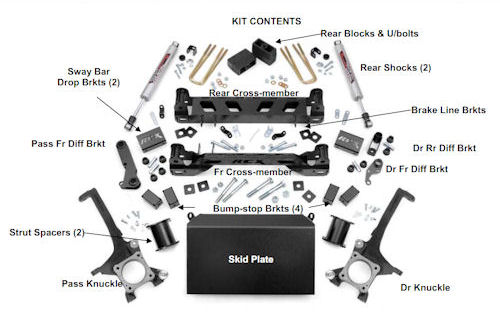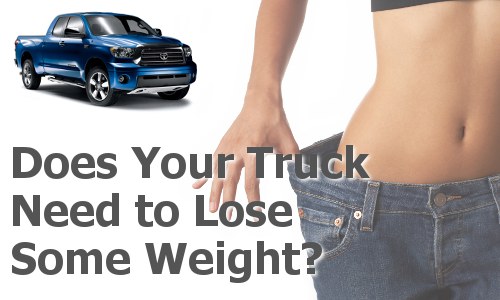Tundra Traction Control Comparison Videos – A Tale of Two Agendas
They say a picture is worth a thousand words, and in the world of viral video, a YouTube link can spew forth opinions at a rate many times that of a single photograph. There’s no denying the power of a well put together video, especially in the automotive world where many drivers adopt the attitude of “seeing is believing” when it comes to performance.
Unfortunately, just because a video has been produced in a professional and well-executed manner, there is no guarantee that the information presented is impartial. Promotional videos released via thinly-disguised publicity campaigns which adopt an air of third-party legitimacy are inherently deceptive. This is just as true in “political action committee” TV ads as it is in the hotly-contested full-size pickup truck market, where so much emphasis is put on comparing and contrasting the capabilities of the offerings from Ford, Chevrolet, Dodge and Toyota.
What you’re about to see is two different videos, each of which claims to do the exact same test…but with very different results. [Spoiler alert: GM lied about the way their trucks compare to the Tundra.] Read more…
F-150 Reputation Resistant to Rust, Fire, and More. Why?
In the last 5 years, the Toyota Tundra has had some serious quality issues:
- Frame rust problems
- Weak tailgates
- Unintended acceleration recalls
While this list is definitely bad, can anyone honestly argue that it’s worse than the F150’s list of problems?
- 1.5 million trucks recalled for spontaneously exploding airbags
- Faulty cruise control modules that have been linked to dozens of vehicle fires
- 2+ million trucks likely to be recalled for rusting fuel tank straps
Granted, Ford has yet to recall the F-150 for rusting fuel tank straps, but all signs point to an imminent recall.
The question is: In light of all of this info, how can anyone honestly argue that Tundra’s reputation for quality or safety is any worse than the best-selling truck in the industry, the Ford F-150? Read more…
Active Aerodynamics and Pickup Truck Fuel Economy
Aerodynamics plays more of a role in automobile fuel efficiency than many people realize. In fact, when looking at vehicles as large as trucks even small tweaks to a body shape’s aero profile can pay dividends in terms of reducing gas consumption at highway speeds.
What Is Active Aero?
In the pursuit of better fuel economy, many automakers are turning to the field of active aerodynamics. Performance enthusiasts are most likely familiar with active aero applications in the racing and high-end sports car world, where spoilers deploy at certain speeds to help achieve greater straight-line stability, or air brakes pop up in order to haul racers down from triple digit speeds as quickly as possible. When it comes to fuel economy, active aerodynamics plays a more subtle, but no less important role in changing the flow of air around an automobile in order to maximize its slipperiness and reduce the amount of energy needed to keep it moving forward at a specific speed. Read more…
Rough Country 4.5-inch Lift Kit for the Toyota Tundra
Some Toyota Tundra owners are not satisfied with a 2-inch or 3-inch lift and instead seek out suspension kits that can provide them with greater ground clearance – kits like the Rough Country 4.5-inch suspension lift. The Rough Country 4.5-inch kit is a very complete offering that comes with everything you will need to add a substantial amount of ride height to your Tundra.

Contents of the Rough Country kit.
What’s In The Box
The Rough Country kit arrives in four boxes containing Read more…
Safety and Fuel Economy Regulations Conspire To Reduce Truck Weight
One of the easiest ways to improve fuel economy is to reduce vehicle weight. Estimates range, but it’s safe to say that a 10% reduction in vehicle weight can boost fuel economy at least 5%, and perhaps as much as 10%. Weight reduction is also desirable because, unlike other fancier technologies (i.e. direct injection, variable valve lift, hybrid-electric, etc.) it’s a relatively simple and inexpensive process. If you want to cut vehicle weight, you:
- Find plastic you can replace with thinner plastic
- Find lightweight metal you can replace with heavy duty plastic
- Find steel you can replace with lighter metals
Simple, right?
OK – maybe not simple. Replacing a steel frame with a magnesium alloy (the most likely replacement material) means re-designing the entire vehicle…magnesium alloy is a different material with different assembly methods, so it’s not a matter of just swapping parts. Still, it’s less complicated to use alloys than it is to design fancy new engines, etc., which means that weight loss is a desirable method of fuel economy improvement.

Reducing the weight of the average pickup truck will improve fuel economy, but will consumers like the side effects?
Because pickup trucks are heavier than the average vehicle, and because a 10% improvement in truck fuel economy represents a greater fuel savings than a 10% improvement in car fuel economy, it’s logical to conclude that trucks must lose weight. The trouble is, consumers don’t necessarily want lighter vehicles (truck owners especially).

